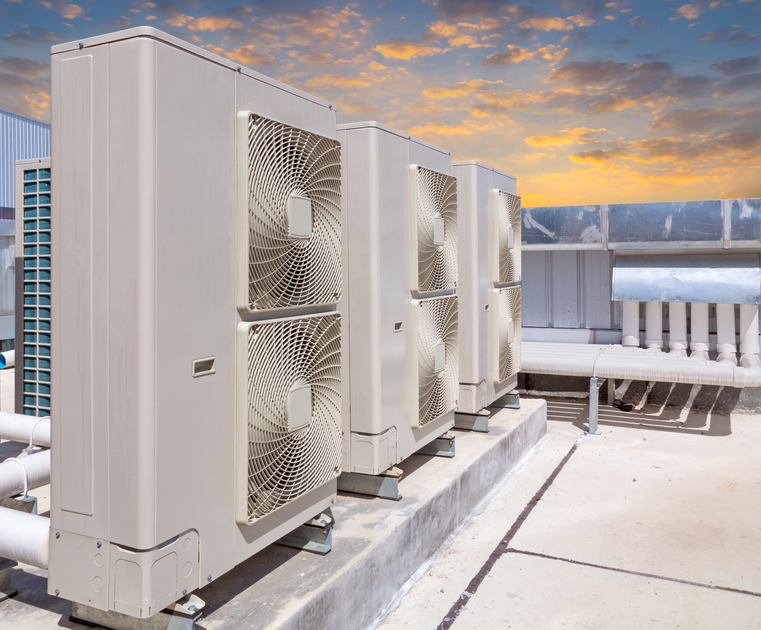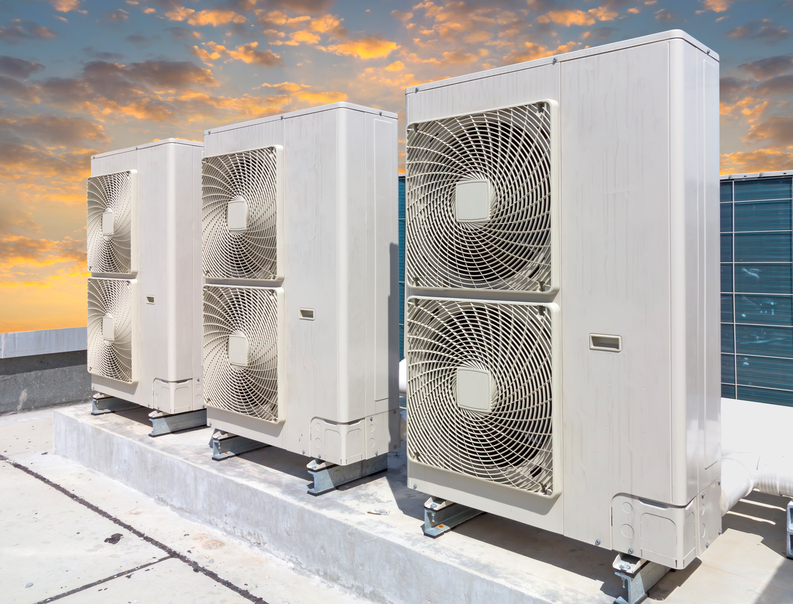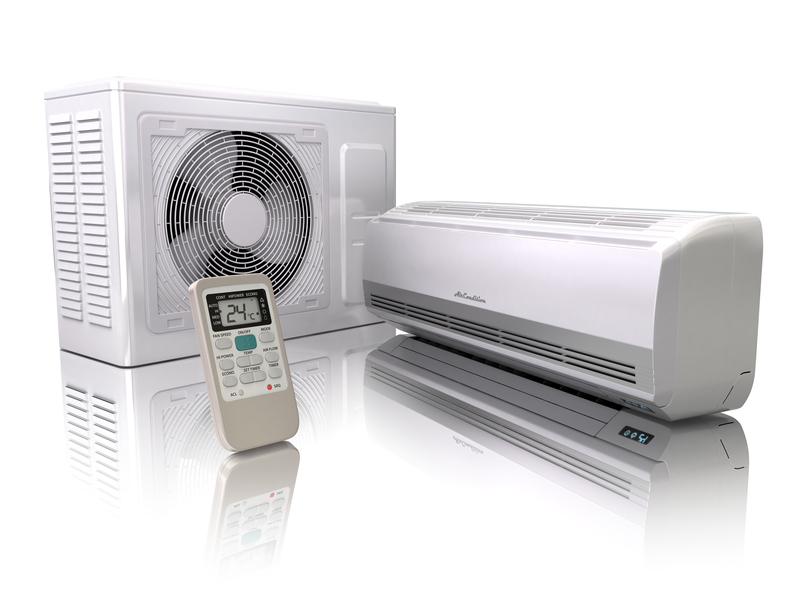Alternative HVAC Systems 24 PDH Discount Package
Alternatives to Active HVAC Systems (M06-016)
Desiccant Cooling Technology (M04-022)
Evaporative Cooling Design Guidelines (M06-014)
Overview of Vapor Absorption Cooling Systems (M04-025)

This online engineering PDH course provides an overview of various TES technology options and discusses their inherent pros and cons.
Thermal energy storage (TES) system is a load shifting strategy for creation of cooling to off-peak hours. In a TES system, a storage media is cooled during periods of low cooling demand and the stored cooling is used later to meet air-conditioning load or process cooling loads. Operating refrigeration chillers at night and displacing energy use from peak (day time) to off-peak periods when the energy is at a lower cost is the primary objective of TES system.
As a proven technology, chilled water or ice thermal storage systems supply the desired reliability for high air conditioning availability during peak hours and can substantially cut operating costs and reduces capital outlays when systems are suitably designed. It offers building owners the potential for substantial operating cost savings by using off-peak electricity to produce chilled water or ice for use in cooling during peak-hours.
This 4 PDH online course is applicable to architects, air-conditioning engineers, controls engineers, contractors, environmentalists, energy auditors and loss prevention professionals. It is assumed that all the readers know the basic functioning of the air conditioning system.
This PE continuing education course is intended to provide you with the following specific knowledge and skills:
- Overview of thermal energy storage systems
- Understanding chilled water storage systems
- Understanding ice thermal storage systems
- Selecting a right TES system
- Familiarizing with district cooling system
In this professional engineering CEU course, you need to review the course document titled, "Air Conditioning with Thermal Energy Storage".
Upon successful completion of the quiz, print your Certificate of Completion instantly. (Note: if you are paying by check or money order, you will be able to print it after we receive your payment.) For your convenience, we will also email it to you. Please note that you can log in to your account at any time to access and print your Certificate of Completion.

This online engineering PDH course presents passive cooling systems which provide guidelines on choosing the proper technologies suitable to different situations.
Buildings are major consumers of energy insofar as their construction, operation and maintenance are concerned. It is estimated that almost 50% of the global energy demand is due to buildings with active HVAC equipment being the highest contributor. Thus, the energy conscious architecture has evolved to address these issues. It involves the use of eco-friendly and less energy intensive building materials, incorporation of passive cooling techniques in building design and integration of renewable energy technologies.
Passive cooling methods maximize the efficiency of the building envelope by minimizing heat gain from the external environment and facilitate cooling by air movement, ventilation, night cooling, evaporation, desiccant dehumidification and earth coupling to name a few. All these techniques require little or no input of electrical energy. Even when these alternatives cannot avoid the use of compressive cooling systems completely, their role can optimize the energy consumption and the peak electric load.
This 6 PDH online course is aimed at students, mechanical engineers, architects, facility managers, environmentalists, energy auditors and anyone interested in gaining a basic understanding of cooling systems.
This PE continuing education course is intended to provide you with the following specific knowledge and skills:
- Understanding the factors having greatest impact on summer cooling loads
- Understanding the mechanisms of heat gain control by intervening solar radiation, vegetation, ventilation and internal heat gains
- Learning the principles of natural ventilation design in night cooling
- Understanding the design factors for stack and wind driven ventilation
- Learning the basic principles of direct and indirect evaporative cooling systems
- Understanding the factors affecting evaporation rate and cooling
- Learning the principles of desiccant cooling and dehumidification
- Knowing the performance of an absorption chiller system v/s vapor compression cycle
- Understanding the various radiant cooling strategies
- Understanding the fundamentals of direct ground cooling systems and geothermal heat pumps
In this professional engineering CEU course, you need to review the course document titled, "Alternatives to Active HVAC Systems".
Upon successful completion of the quiz, print your Certificate of Completion instantly. (Note: if you are paying by check or money order, you will be able to print it after we receive your payment.) For your convenience, we will also email it to you. Please note that you can log in to your account at any time to access and print your Certificate of Completion.

This online engineering PDH course provides an overview of how desiccant systems operate and how they can be of benefit. This course is based entirely on U.S. Army Construction Engineering Research Laboratory resource guide "Desiccant Cooling Technology" developed by U.S. Army Construction Engineering Research Laboratory. This course provides condensed information on desiccant technology, which will benefit reader to learn a significant amount in brief time frame.
Desiccants cooling technology provides a tool for controlling humidity (moisture) levels for conditioned air spaces. It offers numerous advantages over the more common vapor-compression and absorption units. For example, desiccant systems do not need ozone-depleting refrigerants and are very effective at treating the large humidity loads resulting from ventilation air. Also, they use natural gas, solar thermal energy, or waste heat, thus lowering peak electric demand.
The use of desiccant cooling and dehumidification systems into existing and new buildings has shown reduced energy costs, better health, greater comfort and increased productivity for building occupants. Recent advances in adsorptive materials, in conjunction with dehumidifier design innovations are making the technology increasingly attractive.
This 4 PDH online course is applicable to HVAC engineers, facility engineers, architects, environmentalists, operations and maintenance personnel, as well as consultants and contractors who construct, build and manage facilities.
This PE continuing education course is intended to provide you with the following specific knowledge and skills:
- Understanding the fundamental concepts of desiccant technology
- Understanding the benefits of dehumidification with desiccants
- Understanding the alternatives to desiccant dehumidification
- Understanding the types of desiccant systems
- Understanding the application of desiccant systems
- Understanding the performance issues related to desiccant systems
- Understanding the maintenance issues related to desiccant systems
- Understanding the method to calculate heat and moisture loads
- Understanding the sizing of desiccant equipment
- Understanding the selection of control system
- Understanding the cost evaluation (equipment costs, installation costs, operation costs and maintenance costs)
- Understanding the lifecycle cost analysis in design of desiccant technology
In this professional engineering CEU course, you need to review the course document titled "Desiccant Cooling Technology".
Upon successful completion of the quiz, print your Certificate of Completion instantly. (Note: if you are paying by check or money order, you will be able to print it after we receive your payment.) For your convenience, we will also email it to you. Please note that you can log in to your account at any time to access and print your Certificate of Completion.

This online engineering PDH course discusses some of the pertinent design issues and guidelines for evaporative cooling systems.
Evaporative cooling is a method of converting hot air into a cool breeze using the process of evaporating water. There are two essential requirements for evaporative cooling: 1) a wetted surface (supplied by filter pads) and 2) A source of moving air (supplied by a blower powered by an electric motor). The technology is a versatile and energy-efficient alternative to compressor-based cooling. Compared to air-conditioning which uses mechanical refrigeration, the evaporative cooling can fully satisfy building cooling loads using one-fourth the energy of conventional equipment.
The performance of evaporative systems deteriorates as the humidity increases. Consequently, evaporative systems are not suitable for the humid coastal regions. They are generally suitable for areas with dry summers (most of the western United States and other dry-climate areas worldwide. Evaporative cooling is also appropriate for spaces with high outside air ventilation requirements such as patios, auto garages, workshops, locker rooms, restaurant, kitchens, barns, green houses, kennels, agricultural areas, warehouses, docks or bays.
This 6 PDH online course is intended for engineers, architects, realtors, building owners, facility managers, interior designers, landscape architects, construction managers, lenders and educators and other professionals interested in learning about evaporative cooling design guidelines.
This PE continuing education course is intended to provide you with the following specific knowledge and skills:
- Understanding what is evaporative cooling and where it should be used
- Understanding the principles of evaporative cooling
- Applying fundamentals of psychrometrics in estimating evaporative cooling requirements
- Learning the geographical locations that will benefit from evaporative cooling
- Understanding the components and types of evaporative coolers
- Learning how to calculate the cooling temperatures with direct and indirect evaporative cooling options
- Learning how to size evaporative coolers using sensible heat and air change methods
- Understanding the factors which influence the application of evaporative cooling
- Learning about the typical design information, specifications and key formulas for selecting appropriate equipment
- Understanding the HVAC terminology as applicable to the evaporative cooling systems
In this professional engineering CEU course, you need to review the Publication tilted, "Evaporative Cooling Design Guidelines Manual" funded by the United States Department of Energy (USDOE) and the New Mexico Energy, Minerals and Natural Resources Department, Energy Conservation and Management Division (EMNRD-ECMD).
Upon successful completion of the quiz, print your Certificate of Completion instantly. (Note: if you are paying by check or money order, you will be able to print it after we receive your payment.) For your convenience, we will also email it to you. Please note that you can log in to your account at any time to access and print your Certificate of Completion.

This online engineering PDH course provides an overview of absorption refrigeration technology. The aim of this course is to provide the working principle of absorption systems, types, applications, and economics of absorption refrigeration technologies.
The key feature of absorption cooling equipment is that it produces cooling by using heat energy as an input, rather than by using mechanical energy. The heat source is usually delivered via steam, hot water, or direct combustion. Compared to electrically powered chillers, they have high capital cost but these excel in operation where cheap, high grade heat or waste heat is readily available. These chillers do not need ozone-depleting refrigerants and many countries have begun identifying these machines as an energy and environmentally friendly equipment. Some states and utility companies provide subsidies and incentives such as tax rebates and higher depreciation. Absorption chillers can deliver from 25 to 2000 tons of refrigeration.
This 4 PDH online course is applicable to HVAC engineers, facility engineers, architects, environmentalists, operations and maintenance personnel, as well as consultants and contractors who construct, build and manage facilities.
This PE continuing education course is intended to provide you with the following specific knowledge and skills:
- The salient features of vapor absorption refrigeration systems and compare them with vapor compression refrigeration systems
- The fundamental principle of a vapor absorption refrigeration system
- The four basic components of vapor absorption chilling machines
- The expression for maximum COP of ideal absorption refrigeration system
- The description of single and double effect vapor absorption machines
- The desirable properties of commonly used working fluids for absorption refrigeration systems
- The practical problems in actual water-lithium bromide systems
- The methods of capacity control in water-lithium bromide systems
- The economics of vapor absorption systems
In this professional engineering CEU course, you need to review the document titled, "Overview of Absorption Chillers Cooling Systems".
Upon successful completion of the quiz, print your Certificate of Completion instantly. (Note: if you are paying by check or money order, you will be able to print it after we receive your payment.) For your convenience, we will also email it to you. Please note that you can log in to your account at any time to access and print your Certificate of Completion.